John Petrucci on Dream Theater's epic concept album The Astonishing
Plus his signature Dunlop wah pedal and Mesa/Boogie amp
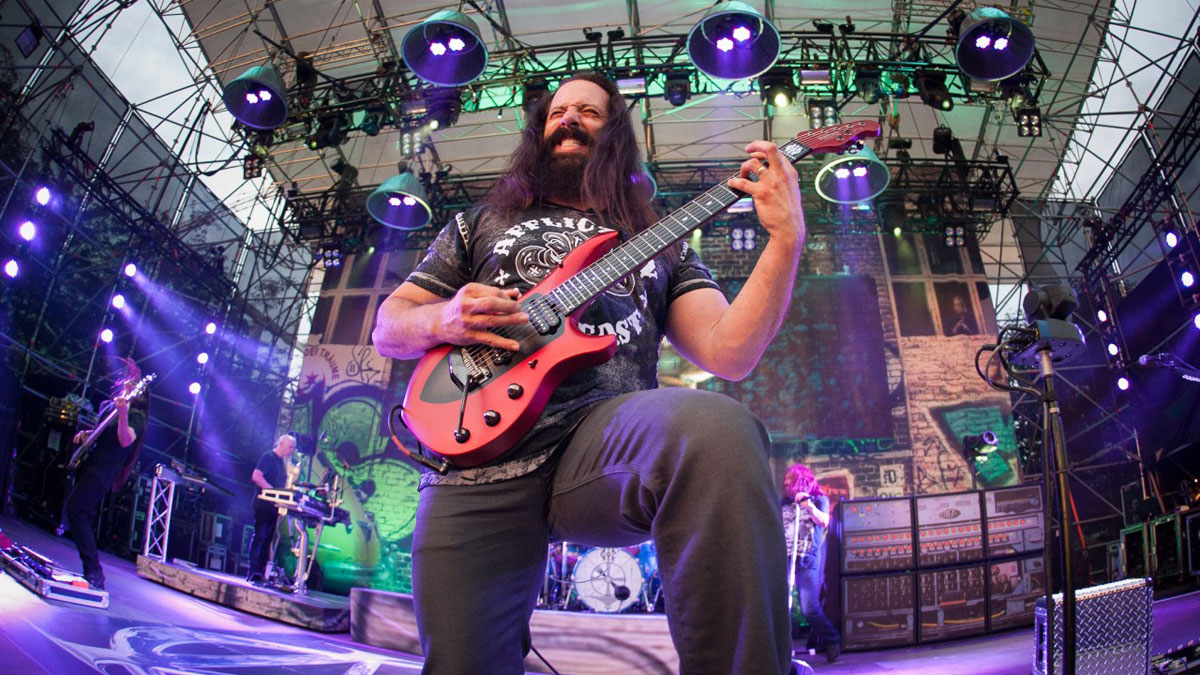
Introduction
John Petrucci has taken on his most ambitious project yet with Dream Theater’s new double-concept album, The Astonishing, he tells us how he pulled it off...
A 34-track double-concept album based on a guitarist’s vision of a futuristic battle between rebels and an oppressive empire? Not many bands would be up for even attempting such a gargantuan task, much less pulling it off as if its success was a foregone conclusion all along.
When I present things, I do my homework first and I’m very thorough
To be honest we can only think of one candidate who would be up to it. And here he is sitting in front of us. Dream Theater’s John Petrucci keeps proving why his status as a hero to other players is deserved, but surely his own band must have needed a little time to get their head around his very ambitious plan for the next step of their progressive journey?
“When I present things, I do my homework first and I’m very thorough,” he tells us of his bandmates’ reaction. “So I laid it out with every aspect: the music, the story, the live show; everything from the mixing, producing and how I envisioned it being done and even getting into the marketing a little bit - a real proposal. Everybody had something tangible to look at and decide whether or not they were on board and fortunately from the very beginning everybody was really, really supportive.”
That team effort has reaped huge rewards on the album, titled The Astonishing, while a supporting live show that will deliver an even deeper experience for fans. We wanted to find out more about how John realised his vision as a musician, and how he handled the producer role with up to 570 tracks to work with in the studio.
Don't Miss
Dream Theater's John Petrucci: my top 5 tips for guitarists
Mesa/Boogie astonishes with JP-2C John Petrucci signature guitar amp head
Dream Theater's John Petrucci: my top 5 not-so-guilty pleasures of all time

Tell us a story
Where did your idea for the The Astonishing stem from?
“It originated about two and a half years ago. First was the idea of doing a concept album, as we haven’t done one in a while. The timing felt right and we had all the pieces in place and we were at a good point in our career to take on something this big.
I wanted to write it only with Jordan [Rudess, keyboards], just the two of us because of how complicated it would be to do
“I wanted to do something with real story behind it, not some abstract concept, but an actual story with characters, plot and settings and so forth. Then the idea came to write not only an album, but write a ‘show’ and create something that could be presented as its own event.”
Can you give us a sense of your creative process to realise this concept?
“First of all, I wanted to write it only with Jordan [Rudess, keyboards - pictured], just the two of us because of how complicated it would be to do. It wasn’t an ‘all the guys in a room’ thing, but two guys intimately in a writing space with piano and guitar keeping it really, really focussed.
“In order to do it right it had to follow a lot of guidelines that were dictated by the story. I studied a lot of different resources. I love sci-fi and fantasy and all that stuff and I would look at things where there was a bigger presentation of a story in a musical form such as Les Mis, or in a story telling sense, Game Of Thrones, things like that. It’s a culmination of my love for a whole bunch of different things all put together.”
Once you had the outline for the story, how did you set about structuring it into the 34 tracks of music?
“I was already collecting different musical ideas and Jordan was collecting a bunch of musical ideas, but when we got together we said okay, let’s really lay this out. I sectioned the story out as far as, ‘This is what will happen in this song and this is what will happen in that song’ - very methodically and we used this really great programme that helps screenwriters and novelists called Scrivener.
“We started meticulously plotting out the songs and then just getting to work, either using existing ideas that we thought would be appropriate for a particular part or coming up with something on the spot. We basically scored the story, so it’s non-traditional.
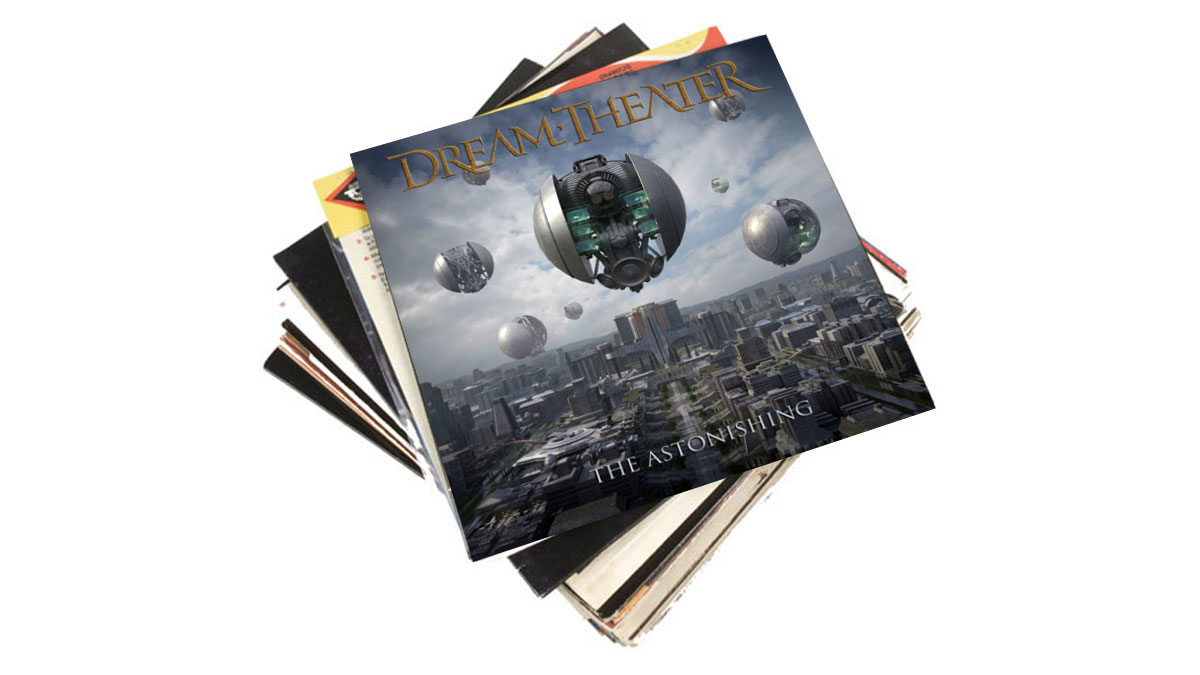
A different scene
How did it differ from your previous concept album, Scenes From A Memory?
“Completely different - Scenes… was loosely based on a story and didn’t have nearly the detail and we wrote the music all together. We followed some guidelines in that we had an overture and things like that but it was more like we would write a regular album. This was more like writing a show, so it was much more involved.
It’s not as conscious as, ‘We’re gonna use this scale to evoke this emotion’, it’s more based on musical experience and sensory memory of things
“Then once we had all the music mapped out, I had to write all the lyrics, which was a huge undertaking. I wrote them as a ‘screenplay’ and you’ll see that when you see the [finished] album so you know who is speaking at any given time.”
The album is incredibly diverse and full of ideas, with lots of tonalities and scales at play. What was your mindset as a player going into this?
“Although it was challenge because of the sheer amount of music, in a lot of ways it was easier because you had a direction from the story; its a case of what do I want to represent here?
“Every character has a vibe, Lord Nefaryus is about the villain guy so I wanted it to sound ominous and there’s another song called Three Days, which is also heavy and ominous but is almost comical in a way.
“It’s not as conscious as, ‘We’re gonna use this scale to evoke this emotion’, it’s more like, ‘Do I want the character to seem sensitive? Or to be ominous?’ or whatever - just based on musical experience and some sensory memory of things that you associate with that feeling and just write because it evokes that emotion.
“For example, The Gift Of Music is the first song after the overture and I wanted the first number to be exciting and positive and I remember that riff just came right out.
“I think you’ll find a lot of this album is different to what we’ve done before because the music is coming from a different place. A lot of times when we write it’s improvised or it starts from an improvisation, or we set out to write a song; it’s different when you’re in that headspace and there’s a definite verse, chorus, bridge type of thing. This was Jordan and I scoring a story, so you’re going to hear things we wouldn’t normally do.”
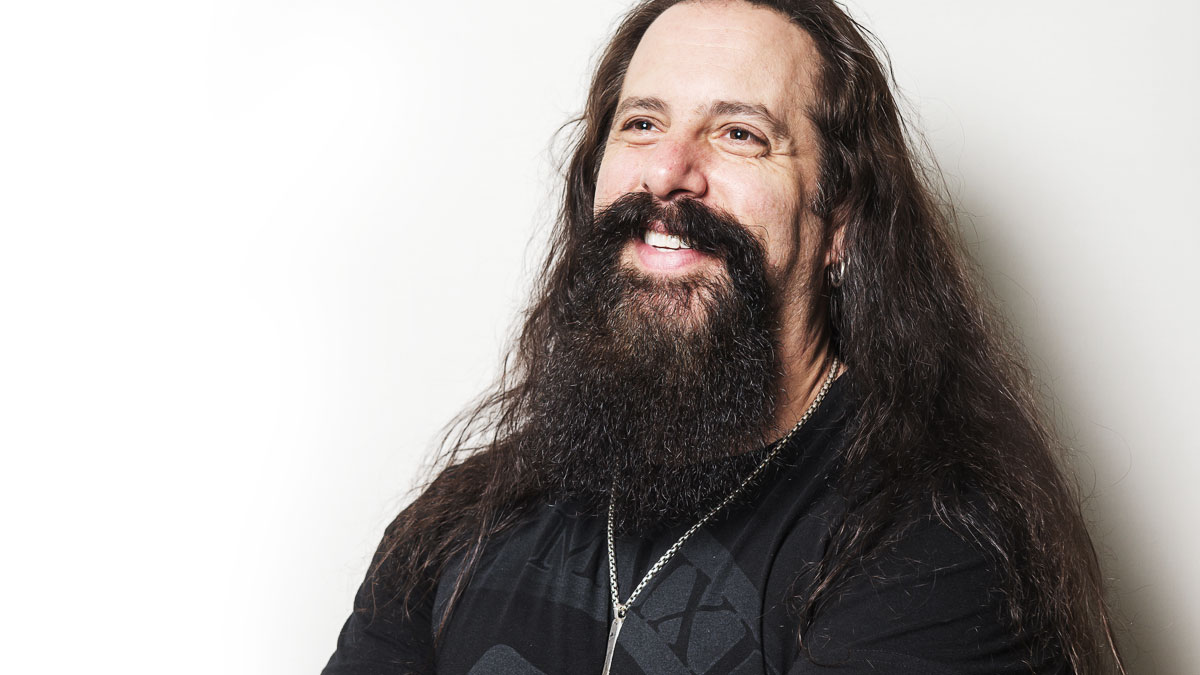
New approaches
You’re known as somebody who is always pushing your playing, what kind of shape did those new approaches take?
“When it comes to the rhythm playing, it’s what’s right for the song, but the solos are the time when you can say something new.
“I wouldn’t say that there’s this one specific technique that I’ve discovered, but it’s more what’s going through my mind is, ‘How can I make this interesting?’ or, ‘How can I make this something where I don’t rely on licks, or something I’ve done before?’ So that what’s on my mind. For example in The Gift of Music there’s this fast flurry of sweeps that I do, which isn’t that complicated, but I just never did that particular thing before.
The cool thing for me is that when I listen back later, it jumps out at me as a little bit unpredictable
“A New Beginning where I do this extended solo. It was a very long period of time to solo over. Sometimes I’ll do a pass and while the idea was really cool, something about it was making me a little bored y’know, so I’ll try to rhythmically throw in some things like different sub-divisions to mix it up.
“The cool thing for me is that when I listen back later, it jumps out at me as a little bit unpredictable. The motivation is to do something interesting, something that’s new for me.”
The solo on When Your Time Has Come has a great wah tone. Are you still using the rack-mount Cry Baby?
“That’s a good question because the wah is actually my new signature Cry Baby, which is based on the rack-mount sound. The story behind that is they approached me about doing a signature wah and I was kinda… ‘I don’t know what I would do, like how do you make signature wah pedals?’
“Then the idea came to me that I’ve been using the rack-mount forever and it’s dialled in to this perfect sound that I like, so I said let’s get that sound into a pedal - it’s my go-to range, Q, volume and everything. It has a lot of attitude and really lets you pull out the amount.”
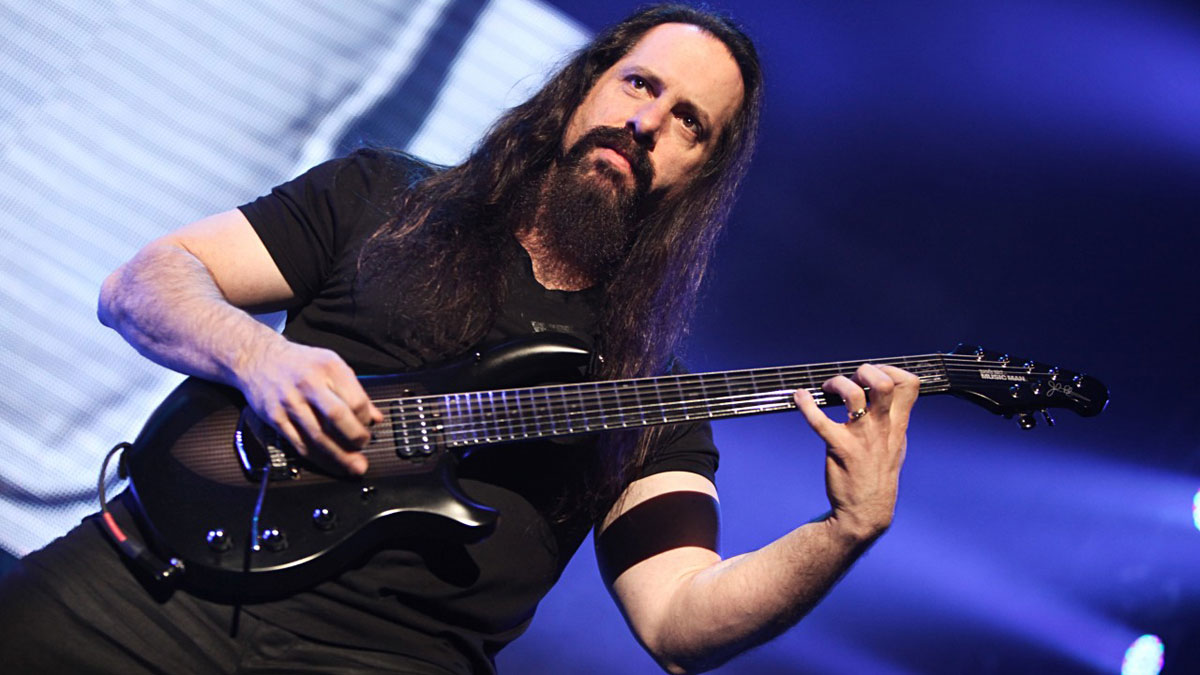
Cinematic scope
David Campbell is well known for his movie soundtracks and arranging for Adele, Muse and Michael Jackson. How did he come to be involved in a Dream Theater album?
“One of the things as producer this time around is I wanted everything to be natural as far as all of the components, from Jordan playing real Steinway piano and a real B3, to using a real orchestra and real choir, so I immediately thought of David Campbell and fortunately he was into it and it’s been a really great ride that we’ve taken with him.
David Campbell said to us that this was the biggest project he’s ever done, so I thought, ‘Wow we must be out of our minds then!’”
“When we wrote the music and started demoing, we’d record in Logic to a click track and Jordan would add layers of string samples and choir samples and so by the time we were done, we had a lot of MIDI information that we sent to David, so it wasn’t as if he had to arrange from scratch; although some songs he did his own thing completely.
“But what was great was that he’d take the stuff and say, ‘You know what? In the real world that instrument doesn’t play that high’, or, ‘The sopranos wouldn’t really sing that, I would support that with the altos’.
“And then to organise the recording sessions which included special sessions, like we have a marching band, a Dixieland band, a bagpipe player… we have mandolins and things. What I thought was incredible given the amount of work that he’s done on movies et cetera. He said to us that this was the biggest project he’s ever done, so I thought, ‘Wow we must be out of our minds then!’”
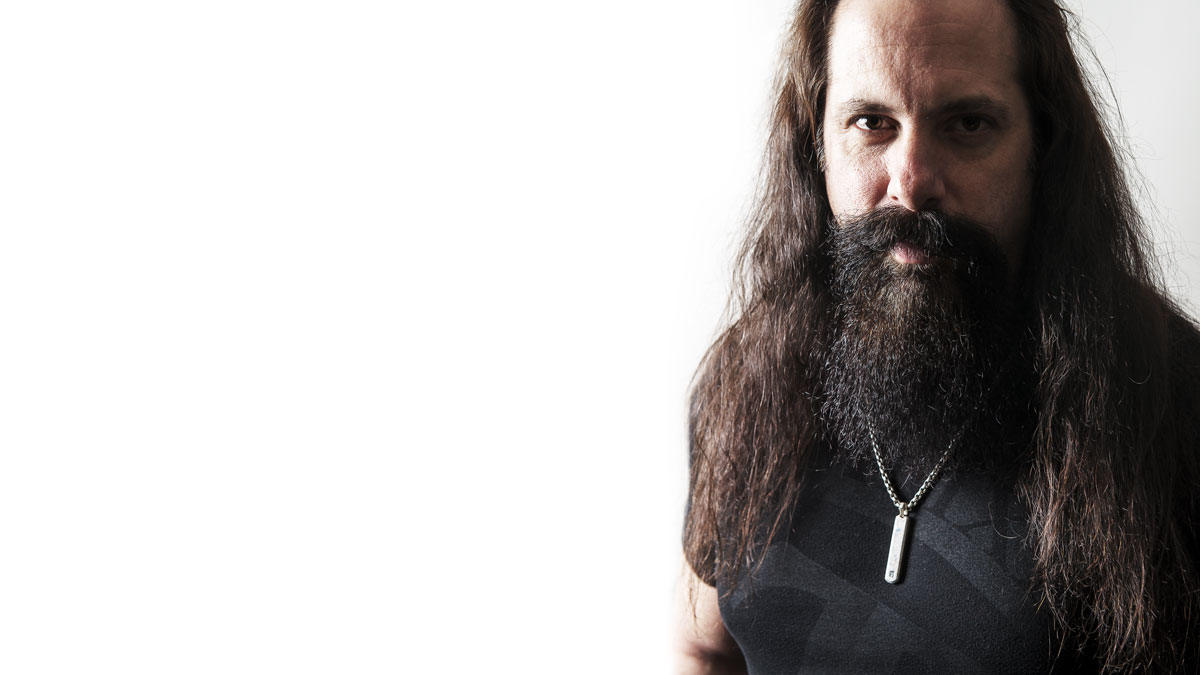
Bitter sweet symphony
That must have been quite a challenge for yourself and Richard Chycki to mix?
“It was! I forget the count but at any given time there was something like 570 tracks between the orchestra, choir and so on. Initially the goal was to record all of these natural-sounding instruments and maybe make the album a bit more organic sounding. I didn’t want an over-hyped, over-produced sound, I wanted something very powerful, but very natural, more like a rock sound.
We’re presenting this as its own show kinda like when Floyd did The Wall
“What ended up happening was that with all this sonic information going it could very easily go in the wrong direction and sound too symphonic, so we had to make sure the core rock and metal sound is present and rocking and everything else finds it’s place around it.”
What type of live show can we look forward to support The Astonishing, and how will you prepare?
“Don’t scare me! It’s all new music so I have to start preparing now, because I’ve only played it once for the recording, so I have to go back and learn what I did. The good thing is I’ve heard it so many times throughout the mixing process.
“We’re presenting this as its own show kinda like when Floyd did The Wall. It’s in two acts and James did all of the voices so there aren’t other guests coming or anything like that, so it’s Dream Theater doing it, but there’s a big visual component where this one company basically animated the entire thing, so it’ll be kinda like watching a moving a kinda like watching us play a live score.”
Dream Theater’s The Astonishing is available now on Roadrunner
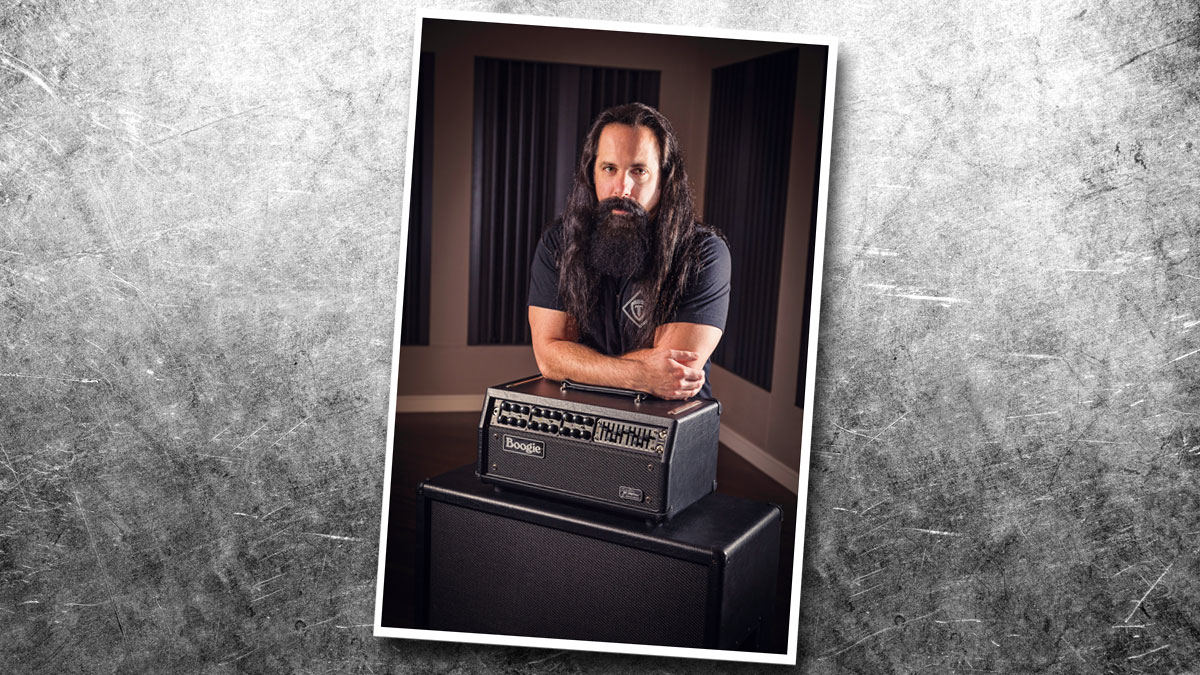
John Petrucci on that signature Mesa/Boogie amp
“The amp I used for the album is my new signature Mesa/ Boogie called the JP2C,” reveals John.
“It’s my very first signature amp and other than a limited run of Mark I amps Mesa did for Carlos Santana a few years ago, it’s the fi rm’s fi rst signature amp as well. As I’ve been using Mesa amps forever and they are on every DT album recorded, it’s something that I am unbelievably excited about.
Twists on a classic
“The Astonishing was recorded with the JP2C exclusively. It’s a three-channel amp that is an exact re-issue of an authentic Mesa/Boogie Mark IIC+ - the same circuit board and transformer etc - but with a bunch of modern twists or improvements.”
Channels
“The amp has three independent channels: one clean and two lead. There are two graphic EQs, which has never been done before on a Mesa amp. It is midi capable and has a built in cab clone.”
Shred head
“It also has a very cool and unique feature called ‘shred’, which helps to shift the gain in the upper harmonics which is great when playing seven, eight-string or detuned guitars. It is by far the greatest amp I’ve ever played and I couldn’t be more proud of it!”
Don't Miss
Dream Theater's John Petrucci: my top 5 tips for guitarists
Mesa/Boogie astonishes with JP-2C John Petrucci signature guitar amp head
Dream Theater's John Petrucci: my top 5 not-so-guilty pleasures of all time

